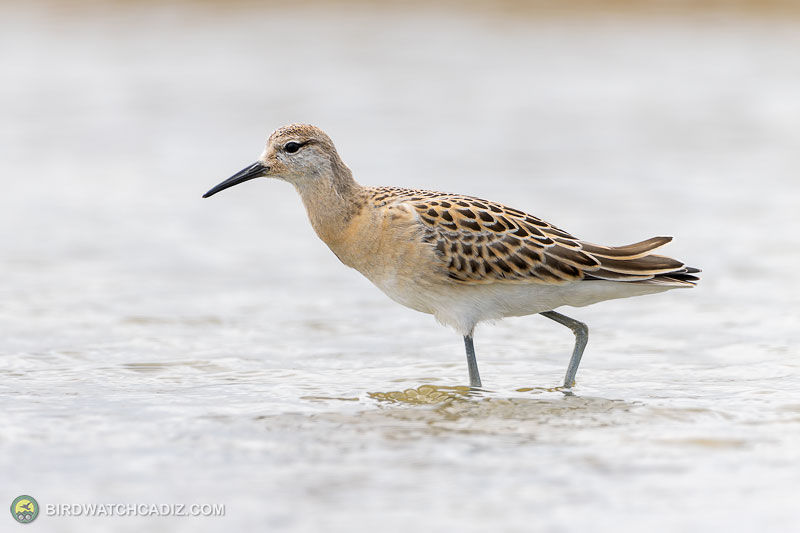Fuente de Piedra: birdwatching in Europe’s Flamingo capital
- May 9
- 4 min read
With the lagoons across Andalusia brimming with water after a generous spring, it felt like the perfect time to explore beyond the borders of Cadiz and head into the neighbouring province of Malaga. My destination was Fuente de Piedra, a vast saltwater lagoon just over the provincial line, known for its impressive flamingo colony and rich birdlife. The elevated water levels promised ideal conditions for breeding birds and excellent birdwatching opportunities—too good to pass up.

I arrived at the Fuente de Piedra Lagoon just after sunrise, when the air was still fresh and the golden light of dawn bathed the landscape in warm hues. My first stop was at the Vicaría viewpoint, a wooden platform offering a slightly elevated view over the lagoon. As the light poured in from the east, it gave the whole place a slightly surreal, mysterious atmosphere.



Standing there, taking it all in, I was immediately struck by the sheer size of the lagoon. Covering 15 square kilometres, it is the largest in all of Andalusia. Its dimensions are impressive: 6.8 kilometres at its longest point and 2.5 kilometres across. Despite its size, it remains surprisingly shallow—never deeper than a metre, even in wet years like this one.


This shallow expanse of water plays a vital role in the life cycle of one of Europe’s most iconic bird species: the Greater Flamingo. Fuente de Piedra hosts the largest breeding colony of Greater Flamingos in Europe, and today, the numbers were overwhelming. I hesitate to guess how many I saw—somewhere between 7,000 and 10,000. It's pretty much impossible to guess accurately because the distances are so huge. Most of the birds were so far away that they appeared as a shifting pink cloud above the water.

The lagoon’s depth and salinity make it an ideal habitat for flamingos in wet years, but in drier seasons, the water evaporates, transforming the lagoon into a saltpan. When that happens, the flamingos abandon their breeding efforts and leave. Fortunately, this year’s generous spring rains have created perfect conditions for a successful breeding season.

After taking in the scene from the Vicaría viewpoint, I moved on to explore the area around the visitors' centre. Several smaller lagoons are located nearby, and they were teeming with birdlife. Not only were there more flamingos—some much closer than the ones seen earlier—but also a variety of duck species, including Red-crested Pochards and Gadwalls. I was especially pleased to spot two threatened species here: the White-headed Duck and the Marbled Duck. The latter were part of a conservation programme—birds bred in La Cañada de los Pájaros and released here in an effort to bolster the wild population. It's always encouraging to see such initiatives bearing fruit.









Photographing the flamingos at one of these smaller lagoons proved a bit tricky. The evaporating water created a beautiful glow around the birds, and I was able to get remarkably close, but the town of Fuente de Piedra loomed in the background. At first, I worried that it might ruin the photos, but in the end it turned out to be a minor distraction. With some careful framing and a bit of patience, I managed to capture some shots I was quite happy with.


The hides scattered around the visitors’ centre are all in excellent condition and offer great opportunities for bird photography. During the week, the area is relatively calm, though there’s still a steady trickle of visitors. On weekends, however, it gets uncomfortably crowded—something to keep in mind when planning a visit.

The light was changing fast. That early morning golden hour gave everything a soft, almost magical feel—perfect for photos. But it didn’t last long. As the sun rose, the light started getting harsher, and by around 10 AM, it was already quite strong and less flattering. Later in the afternoon, the sky clouded over. Still, even without direct sunlight, the landscape was so beautiful it was easy to get some nice shots.



While it's technically possible to walk around the entire lagoon, it would take several hours and wouldn’t get you any closer to the birds. A better option is to drive to some of the other viewpoints scattered around the lagoon. Cantarranas to the west and Las Latas to the south both offer unique perspectives on the water, though, like the Vicaría viewpoint, they’re still distant from the birds. Along the drive to one of these spots, I was lucky enough to spot two Honey Buzzards—a pleasant surprise that added a touch of raptor excitement to the day.




A few kilometres south of the main lagoon lies another place worth visiting: Laguna Dulce. I stopped there briefly and was rewarded with nice views from the wooden hide. Just like the other locations, it’s best to bring a telescope or a telephoto zoom lens to make the most of the experience. Through my zoom lens, I was able to observe a pair of Great Crested Grebes engaged in an elegant courtship ritual, their mirrored movements rippling through the still water.




The Fuente de Piedra region is a birdwatcher’s dream, especially in a wet year like this. With so many interesting lagoons spread out across the area, it’s easy to spend an entire day exploring, hopping from one hide to the next in search of new species and better views. Each stop reveals a different facet of this fascinating wetland landscape, and every visit offers something new to discover.





Comments